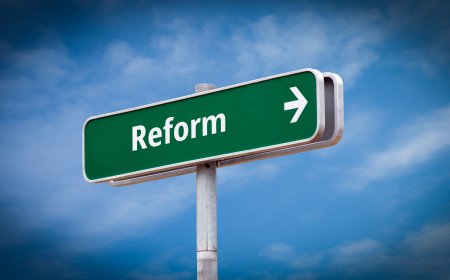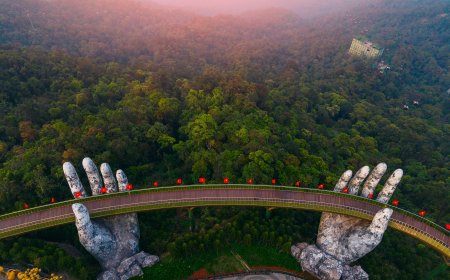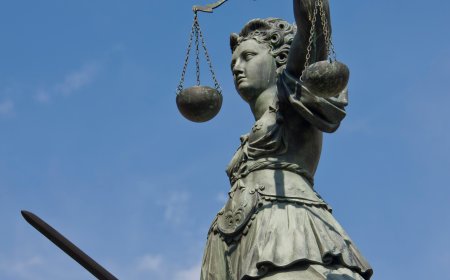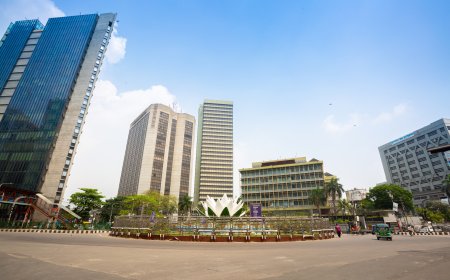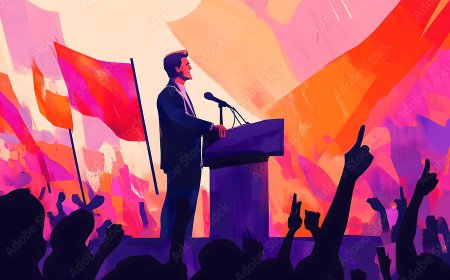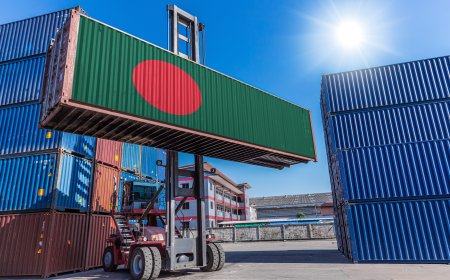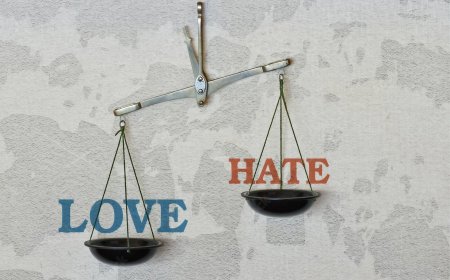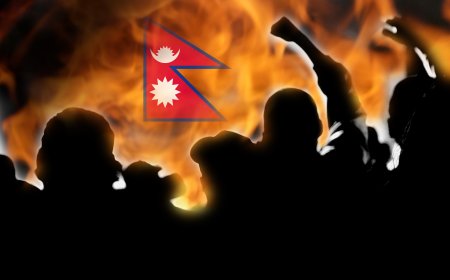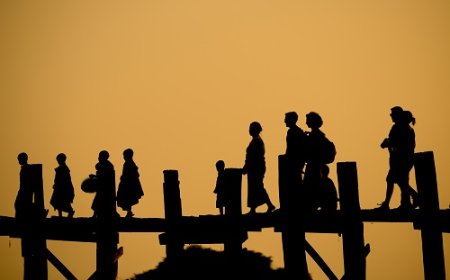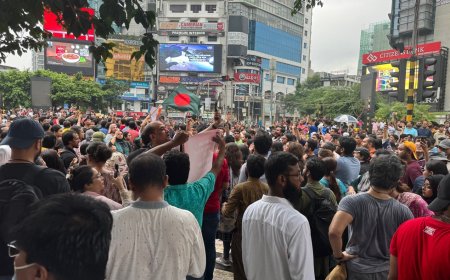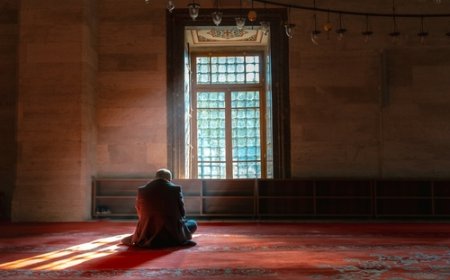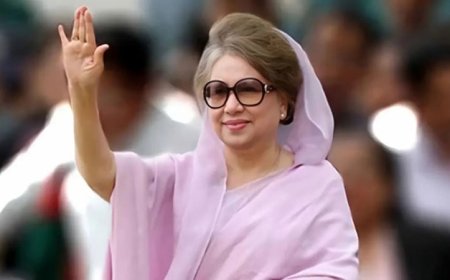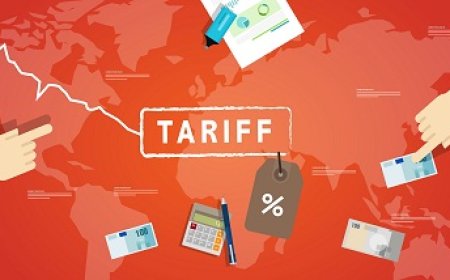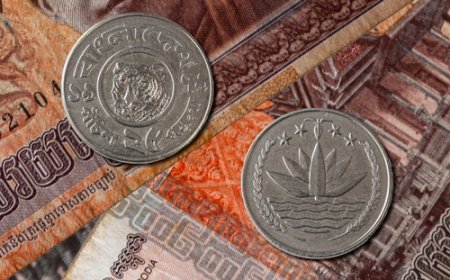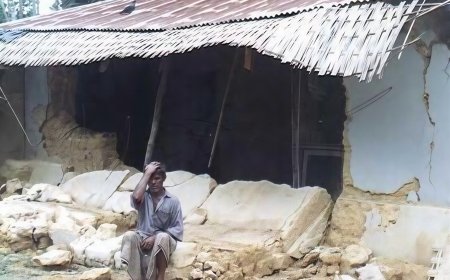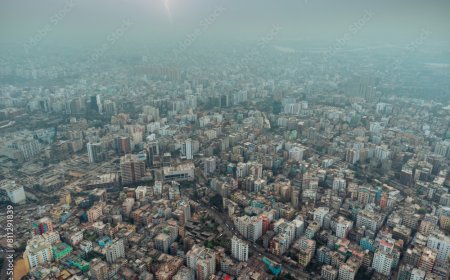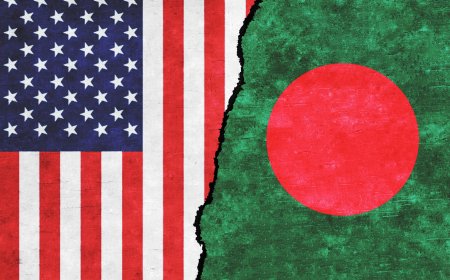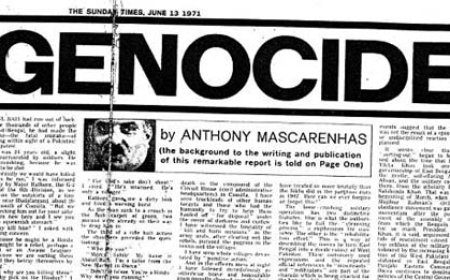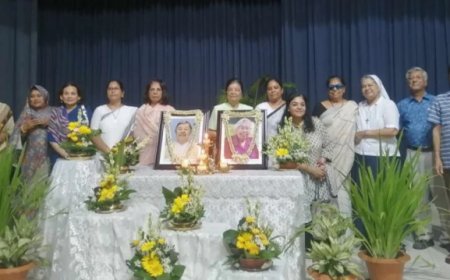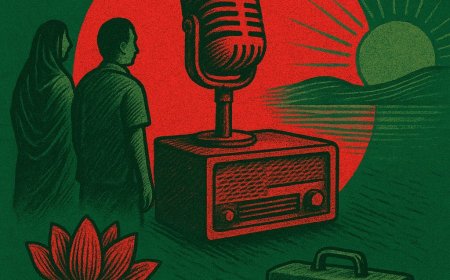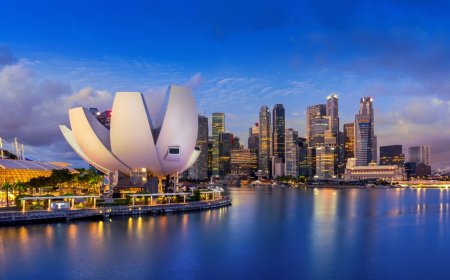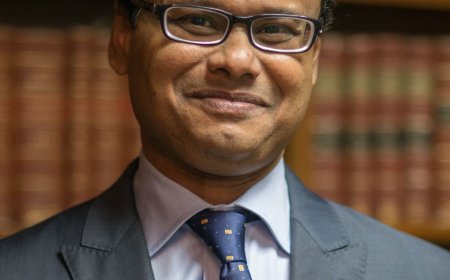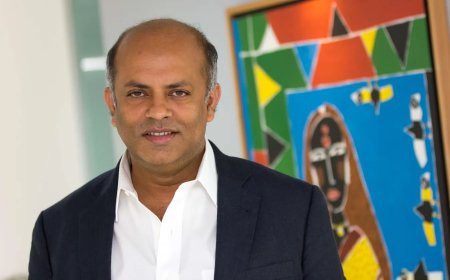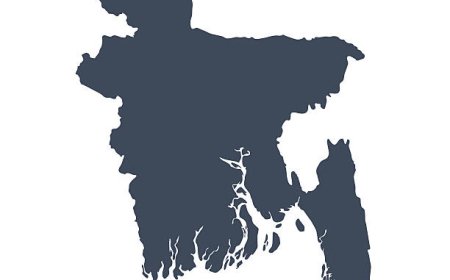How India’s Deep State Exploits Both Sides of Bengal for Its Political Gain
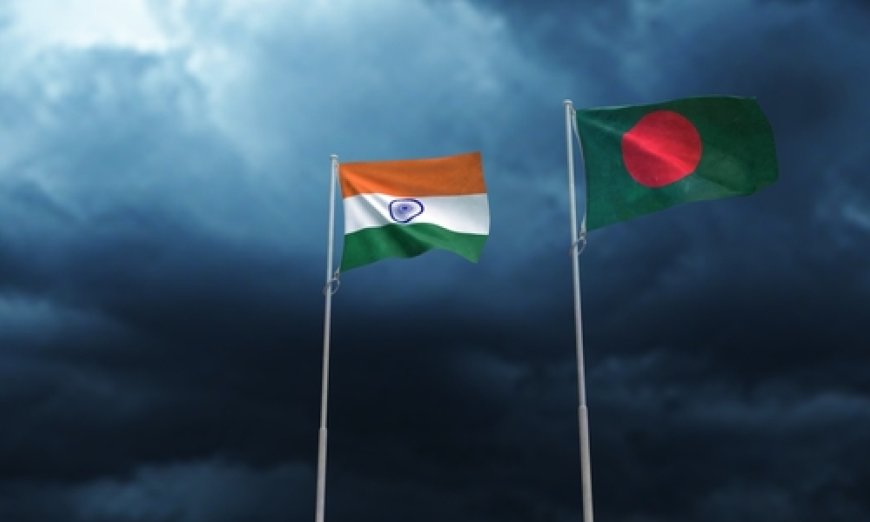
In 1947, Bengal stood at a momentous crossroads. A bold, visionary proposal put forth by Huseyn Shaheed Suhrawardy and Sarat Chandra Bose sought to create a United Sovereign Bengal -- a secular, independent homeland that would transcend religious division and preserve the civilizational unity of the Bengali people. It was an idea rooted in shared language, culture, and history; a last-minute attempt to prevent the communal bloodbath that Partition would unleash.
But the dream was short-lived. The Hindu elite of Calcutta, driven by anxieties over Muslim demographic dominance and emboldened by the Indian National Congress, rejected the proposal. Instead, they opted to merge West Bengal with the soon-to-be-born Hindu-majority India, sacrificing regional unity at the altar of communal fear and nationalist alignment. The betrayal was not simply of a political proposition -- it was the rejection of a future that could have shielded both East and West Bengal from decades of exploitation, fragmentation, and marginalization.
What followed was a modern replay of the very imperial strategy Bengal had resisted in 1905, when Lord Curzon’s infamous partition of the Bengal Presidency was seen by many as a British ploy to divide and weaken a rising nationalist consciousness. The only difference in 1947 was that the dividing hand came not from London -- but from New Delhi.
Since that fateful rejection, New Delhi’s deep state has masterfully manipulated both sides of Bengal -- Muslim and Hindu, elite and subaltern, Dhaka and Kolkata alike -- to serve the hegemonic interests of North Indian power centers. Bengali identity, once vibrant and self-sustaining, was gradually commodified, diluted, and then weaponized -- not to uplift its people, but to control a culturally rich and geopolitically strategic frontier of the subcontinent.
This is the story of how a proud, poetic, and pluralistic nation was carved in two, politically disarmed, and used as a buffer zone in New Delhi’s grand strategy -- a legacy of division that echoes not only the imperial maneuvers of the British Raj, but the cold calculations of India’s postcolonial power brokers.
The Betrayal of 1947: The Death of United Bengal
When the British prepared to exit the subcontinent, Bengal -- then undivided -- was a land with a narrow Muslim majority and a rich tapestry of Hindu-Muslim syncretism. The idea of a United Bengal surfaced as a viable third way between India and Pakistan. Supported by both Huseyn Shaheed Suhrawardy (Muslim League premier of Bengal) and Sarat Chandra Bose (brother of Subhas Bose), the plan was to keep Bengal united and independent, a state for all Bengalis.
But New Delhi had other plans.
The Hindu bhadralok (elite) of Calcutta, including influential Congress leaders, rejected the proposal fearing domination under a Muslim-majority system. Jawaharlal Nehru himself dismissed the plan, stating: "Bengal must not be allowed to go free." The Congress elite instead ensured that West Bengal was carved out and folded into India, even though this meant a smaller share of land (approx. one-third) and population than East Bengal, which became East Pakistan.
The result: both sides remained saddled with vulnerable religious minorities and unfinished nationalist identities -- setting the stage for decades of cross-border manipulation and ethnic marginalization.
East Pakistan: Bengali Muslims Under a West Pakistani Yoke -- and Still Loyal to Calcutta
In East Pakistan, the Bengali Muslim majority famously rose in 1952 to defend their linguistic identity against the imposition of Urdu -- an act of resistance that would later serve as the ideological bedrock of Bangladeshi nationalism. Yet, ironically, the cultural pride that animated the Language Movement remained tethered to an inherited reverence for the so-called “higher culture” of Calcutta. This was not a sentiment rooted in the rural masses, but rather a fixation among the East Bengali elite, who continued to crave aesthetic and intellectual approval from their western counterparts. Even as political autonomy was sought, cultural dependency lingered.
Dhaka’s post-Partition intelligentsia remained curiously deferential -- mirroring West Bengal’s standards in literature, music, attire, and ideological postures. The paradox was stark: while East Bengal rejected the linguistic domination of West Pakistan, its elites quietly embraced another form of subjugation -- one steeped in the bhadralok values of a cultural establishment that had already chosen to sever political unity in 1947.
This misplaced loyalty—preserved even under systemic repression by the West Pakistani state—prevented Bengali nationalism from evolving into a fully autonomous, decolonized identity. Bengali Muslims, in effect, became guardians of a cultural standard that had already disowned them. It was a contradiction that went unexamined for too long, and in doing so, it created a deep psychological vulnerability -- one that New Delhi would later exploit with surgical precision, offering patronage cloaked in familiarity, and reasserting control through the very symbols East Bengal once believed were its own.
The 1965 War and India’s Infiltration Begins
Following the 1965 Indo-Pak war, India strategically amplified its presence in East Pakistan -- not through direct war, but via cultural infiltration.
The Awami League, increasingly at odds with West Pakistan, found natural ideological allies in Indian secular elites.
West Bengal’s cultural soft power -- Tagore, Shantiniketan, the bindi-wearing bhadralok aesthetic -- began to dominate Dhaka's cultural consciousness.
By 1971, India had skillfully positioned itself as the moral liberator of East Pakistan. But this was not an act of charity. As Indira Gandhi’s advisor P. N. Haksar later wrote: "We must ensure Bangladesh remains dependent on India, not just militarily, but economically and culturally."
Mission accomplished.
Post-1971: New Delhi’s Doctrine of Control
India may have militarily aided the birth of Bangladesh in 1971, but it also midwifed the new nation with a blueprint that ensured long-term strategic control.
From the outset, the Awami League leadership -- already culturally aligned with West Bengal’s bhadralok aesthetic -- proved a willing partner in adopting India’s influence, not merely as an ally but as a guiding force.
What unfolded in the decades that followed was a carefully executed program of soft colonization, veiled in the rhetoric of friendship and shared heritage.
Indian cultural centers emerged across Dhaka and Chittagong, projecting a refined, Calcutta-approved version of Bengali identity that gradually displaced grassroots Bangladeshi expressions.
In the 1990s, the advent of satellite television further deepened this influence. A steady stream of Hindi soap operas and Kolkata-based programming infiltrated middle-class households, subtly shaping aesthetic preferences, gender norms, and political sensibilities. What passed as entertainment was in fact a sustained cultural indoctrination that blurred the lines between cross-border affinity and psychological annexation.
This cultural engineering ran parallel to a visible shift in state institutions. Hindu bureaucrats and judges, many of whom owed their appointments to backdoor blessings from New Delhi, began rising disproportionately within the ranks of Bangladesh’s civil administration. Despite comprising less than 8% of the population, the Hindu minority came to occupy a strikingly outsized 30% share of influential government positions by 2024.
The media space followed a similar trajectory. Hindu journalists -- some with strong roots in West Bengal, others connected to Indian-intelligence and think tanks -- began to hold disproportionate editorial influence in Dhaka-based newsrooms. Their alignment with Indian strategic interests was subtle but unmistakable, tilting public discourse in a direction palatable to New Delhi and hostile to independent Bangladeshi political evolution.
Meanwhile, the majority of Bangladeshi Muslims -- especially those in rural regions -- remained politically and culturally disenfranchised. They were pressured to adopt a sanitized, neutered version of secular identity, one that dislocated them from their religious and social roots.
The demographic majority that had fought for self-determination in 1971 saw itself increasingly alienated from power, pride, and narrative control.
Religious visibility was not just marginalized -- it was gradually criminalized. What began as rhetorical exclusion in the name of “secular governance” evolved into a policy of institutional suspicion. Devout Muslims were slowly cast as latent extremists or ideological threats, with faith-based expressions viewed through the lens of counterterrorism.
This narrative did not evolve organically. It was the product of deliberate strategic design. Indian intelligence-aligned media networks embedded in Bangladesh played a crucial role in shaping public perception. These networks, in turn, echoed New Delhi’s diplomatic messaging to the West, presenting Bangladesh as a fragile Muslim-majority democracy in need of constant moderation and external supervision.
The Awami League leadership not only accepted this framework -- it internalized it, repackaging it for domestic consumption. Urban elites, educated in institutions steeped in West Bengali cultural admiration, became eager ambassadors of this externally imposed worldview.
Together, these mechanisms served two strategic functions.
First, they neutralized Islamic political expression within Bangladesh, delegitimizing any movement that emerged from religious identity or rural consciousness.
Second, they synchronized Bangladesh’s internal political culture with New Delhi’s regional doctrine --that of "moderate Muslims with high potential to radicalize, and therefore best kept under permanent surveillance." This doctrine, while never formally codified, has come to define India’s unspoken terms of engagement with its eastern neighbour.
Thus, the liberation of Bangladesh in 1971 was not the end of foreign control -- it was merely the transition from one form of domination to another. And the post-war elite, consciously or not, became complicit in enabling this new, more insidious form of subjugation.
West Bengal: Ruled by Muslims, But Muslims Have No Power
On the other side of the border, West Bengal presents a political paradox. The state votes heavily Muslim -- nearly one in three voters comes from the Muslim community -- yet those same voters remain almost entirely excluded from real power. The Trinamool Congress (TMC) has risen to power again and again on the strength of the Muslim vote, but this numerical strength has never translated into institutional representation.
Muslims, who make up over 27% of West Bengal’s population according to the 2011 Census, occupy only around 2% of the State Administrative Cadre. By contrast, in neighbouring Bangladesh, the Hindu minority -- only 8% of the population -- commands over 30% of government jobs, an imbalance that starkly exposes the double standard in how minorities are treated on either side of the border.
Muslims in West Bengal remain virtually absent from media ownership and editorial influence, with barely any representation in either the Bengali or English-language press. Their presence in the police force, judiciary, and intelligence services is similarly negligible -- a pattern long documented by the Sachar Committee and ignored by successive governments. In Muslim-majority districts like Murshidabad, Malda, and North Dinajpur, Muslims find themselves increasingly ghettoized, policed not just by the state but by the suspicion of being extremists or “infiltrators.”
Meanwhile, Delhi continues to manipulate West Bengal through a calculated blend of coercion and containment -- withholding central funds, tacitly enabling the BJP’s Hindutva apparatus to foment communal unrest, and most insidiously, demonizing the state's sizable Muslim population through a relentless barrage of media propaganda and Bollywood storylines that portray them as extremist threats.
These manufactured narratives foster a dangerous illusion of protection among Bengali Hindus, suggesting that absorption into a broader Hindu-majority framework offers safety. In truth, it only entrenches division, deepens dependency, and further erodes regional autonomy.
The irony is hard to miss. The very Hindu elite in Kolkata who once rejected the vision of a secular, united Bengal now spearhead a campaign of anti-Bangladesh rhetoric -- accusing the neighbouring country of Islamism, infiltration, or strategic alignment with China. This, despite the reality that West Bengal’s economy remains heavily reliant on the steady influx of Bangladeshi tourists, medical patients, and consumers, whose spending sustains the state’s fragile service sector. It is not ignorance that fuels this duplicity, but the quiet convenience of aligning with a hegemon that rewards compliance and punishes defiance.
And perhaps most disheartening is the spectacle of Bangladeshi Muslim journalists and politicians who, in pursuit of relevance, recognition, or rupees, willingly appear on Indian television screens to echo narratives that degrade and endanger their own people. In parroting New Delhi’s talking points, they do more than undermine their national integrity -- they become complicit in the decades-long cultural and political subjugation of Bengalis, on both sides of a border drawn not by shared history, but by a betrayal of it.
The irony deepens in the post–August 5 reality. Awami League leaders, large in number -- Muslim by faith but politically aligned with New Delhi -- now live in uneasy exile in Kolkata, reportedly sheltered by the Indian government. Yet even in this supposed safe haven, they are viewed with quiet disdain by many Kolkata Hindus -- resented, labeled as outlaws, charged exorbitant rents, and frequently threatened with deportation due to lack of valid residency documents. What emerges is a profoundly uncomfortable truth: New Delhi’s exploitative machinery spares no one -- neither the Muslim in general nor the West Bengal Hindu, neither the loyalist nor the dissenter. It dumps its political debris across both West Bengal and Bangladesh, leaving behind a landscape fractured by suspicion, opportunism, and dispossession.
Delhi’s Dual Game: Exploiting Both Sides of Bengal
India’s deep state has perfected a dual strategy of control and exploitation -- one that plays out in parallel across Dhaka and Kolkata. In Bangladesh, it co-opts the Bengali Muslim elite under the pretense of “shared culture” and “secular partnership,” using this class to serve New Delhi’s regional ambitions. In West Bengal, it suppresses the Bengali Muslim population by denying them meaningful representation while simultaneously inciting Hindutva-driven fear narratives that portray Bangladeshi Muslims as existential threats.
The outcome is a grim paradox: both halves of Bengal remain culturally subordinated and politically manipulated by Delhi.
Bangladesh, despite achieving a GDP of approximately $460 billion in 2024, finds its political breathing space constrained by a neighbour whose own West Bengal state economy trails behind at a mere $260 billion. Yet New Delhi imposes its will through asymmetric controls -- enforcing visa bans, bureaucratic restrictions, and diplomatic cold shoulders whenever Dhaka signals even modest assertion of sovereignty.
The imbalance is stark: Bangladeshi tourists and medical patients pour millions into Kolkata’s struggling economy, sustaining its hospitals, hotels, and retail markets. But instead of gratitude, they are treated as bargaining chips -- humiliated at consulates, delayed at checkpoints, and scapegoated in political rhetoric.
Ironically, while West Bengal’s economy is sustained -- oxygenated, one might even say -- by the steady footfall of Bangladeshi tourists, patients, and shoppers, its media establishment, largely Hindu-owned and New Delhi-aligned, habitually ridicules or vilifies the very people underpinning its survival.
These narratives are not accidental; they are calculated. Bangladeshi Muslims are frequently portrayed as “radicals,” “infiltrators,” or even “Chinese proxies” -- manufactured threats designed to fit seamlessly into New Delhi’s broader regional narrative of control and suspicion.
The consequences of this demonization -- driven by unfiltered television propaganda and amplified across borders -- are not confined to India alone. In Bangladesh, Hindu minorities often become unintended targets, not necessarily of mass hostility, but of political actors who exploit communal tension for personal or partisan gain.
Disturbingly, elements within the Awami League -- New Delhi’s long-standing ally -- have repeatedly been complicit in such opportunistic harassment, weaponizing their proximity to Indian power structures to evade domestic scrutiny. These actors use communal unrest not as a failure to resolve, but as a resource to manipulate.
And through it all, New Delhi maintains a calculated silence -- turning a blind eye to the fallout of its own propaganda machine, so long as its strategic levers in Dhaka remain intact. The same Indian state that tolerates these abuses does not hesitate to invoke the persecution of Hindus in Bangladesh when politically convenient, not out of concern for minority rights, but as a diplomatic tool to pressure, destabilize, or embarrass when the Dhaka regime veers even slightly from India’s preferred orbit.
Additionally, along the porous yet heavily policed border, the brutality is not symbolic -- it is real. The Border Security Force (BSF) acts less like a peacekeeping force and more like a paramilitary sent to punish. Bengali Muslims -- and often even Hindus -- who live in borderland communities or maintain familial ties across the Radcliffe Line face regular harassment, torture, and execution-style killings. These are not sporadic accidents or isolated misfires. They reflect a systematic policy of dehumanization, where borderland Bengalis are seen not as citizens of concern but as liabilities to be managed through violence.
In practice, both sides of the Bengali identity are exploited. In times of peace, they are economically drained. In times of tension, they are vilified in state-aligned media. At all times, they remain vulnerable to coercion, manipulation, and brutality.
This is not the product of a failed policy -- it is the outcome of a deliberate strategy. A strategy that sees the Bengali not as a partner in South Asian development, but as a people to be managed, monitored, and mined -- culturally, politically, and economically.
A Nation Divided, A People Used
The tragic rejection of the United Bengal proposal in 1947 handed Delhi the perfect opportunity to implement a long-term policy of divide and rule -- splitting a once-unified people along artificial lines of religion and allegiance. In the decades since, Bengal has been geographically severed, culturally fragmented, economically manipulated, and politically neutralized -- not by chance, but by calculated design.
From the drawing rooms of Kolkata to the rural heartlands of Sylhet, both Hindu and Muslim Bengalis have been systematically used as pawns on New Delhi’s regional chessboard. The Bengali identity, once defiant and fiercely self-assured, has been hollowed out -- reduced to a cultural artifact invoked in poetry and nostalgia, while real power and dignity slip further from its grasp.
What remains is a people betrayed -- by history, by their elites, and by the false promise of partnership with a hegemon that never saw them as equals. Bengali pride persists, but it is a pride shackled by a legacy of exclusion and manipulation. Until that historical wound is acknowledged -- and until both halves of Bengal reclaim their voice and agency -- true unity, dignity, and sovereignty will remain elusive.
The vision of a United Bengal was never mere idealism -- it was a concrete opportunity to assert Bengali sovereignty beyond the reach of New Delhi's manipulations or Islamabad's insecurities. That vision did not perish at the hands of departing British administrators; it was betrayed by the political opportunism of the Hindu bhadralok elite and the communal hesitations that fractured solidarity when it was most needed.
Today, from Dhaka to Kolkata, Bengal continues to bleed -- culturally colonized, politically fragmented, and economically tethered to the whims of a New Delhi establishment that neither understands nor respects its unique civilizational depth. The proud identity of Bengal has been reduced to curated nostalgia, invoked selectively when convenient -- through token gestures like preserving the ancestral homes of Satyajit Ray (supposed) or Rabindranath Tagore in Bangladesh -- while the larger project of unity, dignity, and self-definition remains abandoned.
Unless both sides of Bengal awaken to the full scope of their shared history -- not just in literature or cuisine, but in political aspiration and civilizational agency -- and boldly assert a truly independent Bengali identity, they will remain what New Delhi has made them: not a people with a future, but a divided population used as a cultural buffer, economic reservoir, and strategic vessel for someone else’s empire.
What's Your Reaction?







